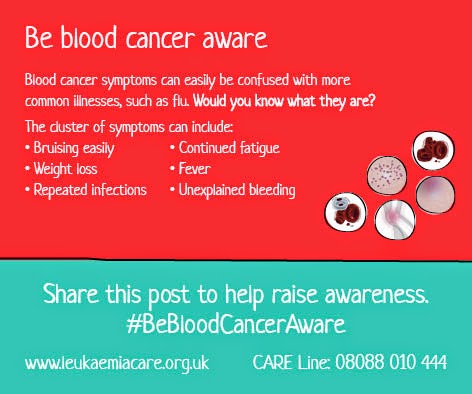Acute Promyelocytic Leukaemia (APL): From Diagnosis to Treatment
We are the blood cancer charity Leukaemia & Lymphoma Research. We work to improve the lives of patients with blood cancers such as Acute Promyelocytic Leukaemia (APL). Our research aims to stop people dying from blood cancer and even prevent people developing blood cancer in the first place. For over 50 years now we have been working to beat blood cancer and we won’t stop until we do. We’re honoured to have heard Emily’s story and see the people that she has inspired through sharing her experiences in dealing with APL.
Acute Promyelocytic Leukaemia or APL is the M3 subtype of Acute Myeloid Leukaemia (AML). Although the symptoms of APL are similar to the symptoms of AML the treatment is usually very different. Many of the symptoms of APL are a result of cancer cells interfering with bone marrow and the production of healthy red blood cells, white blood cells and platelets.
APL can develop at any age and usually develops very quickly, with symptoms appearing in a matter of days or weeks - Emily was diagnosed at age 20 after she developed symptoms that could be confused with tonsillitis.
The most common symptoms of APL include:
• Unusual bleeding and bruising – bleeding is a serious symptom of APL and needs immediate attention
• Paleness
• Tiredness and breathlessness
• Frequent infections and difficulty in fighting them off
Other less common symptoms for APL:
• Bone pain
• Swollen glands
• Abnormal pain
• Occasionally some patients may develop chloromas, which are small lumps under the skin caused by leukaemia cells clustering
Treatment
The treatment for APL is begun as soon as possible after diagnosis to combat the excessive bleeding (caused by the lack of platelets which clot blood) that is so common amongst patients with APL.
Chemotherapy
The main treatment for APL is Chemotherapy. Chemotherapy will consist of a combination of anti-cancer drugs, these drugs are administered in a precise order depending on the patient’s age, general health and the severity of their condition.
Stem Cell Transplant
Patients who are generally in good health are considered for stem cell transplant. Stem cell transplant is a very strenuous form of treatment that is only recommended for patients who have relapsed or have an aggressive form of APL. Older or weaker patients may be offered a less invasive form of the treatment.
Supportive Care
As infections and treatment complications are quite common amongst patients with APL, supportive care is a key factor in a patient’s recovery. Supportive care for patients with APL most commonly includes treatments for anaemia caused by lack of red blood cells and treatments for Thrombocytopenia which results in excessive bleeding.
Prognosis
The likelihood of being cured is very much dependant on factors such as the subtype of APL, how far the disease has progressed before diagnosis and treatment, age and general fitness.
Although younger patients with good fitness levels are likely to respond better to treatment, the prognosis for patients with APL is one of the best within the AML diagnosis. Following the correct treatment over 70% of patients with APL were cured.
In the spirit of
National Cancers Survivors Day, which was on the 1st research has helped in adding more success and inspirational stories such as
Emily’s. Charities like us will continue to invest in research to beat blood cancer. If you are struggling to deal with blood cancer, visit our website for patient support resources to help you get through
Acute Promyelocytic Leukaemia and other blood cancers.
































